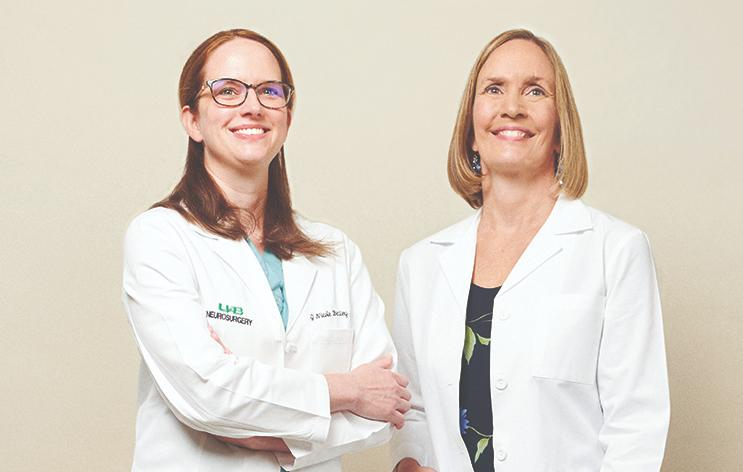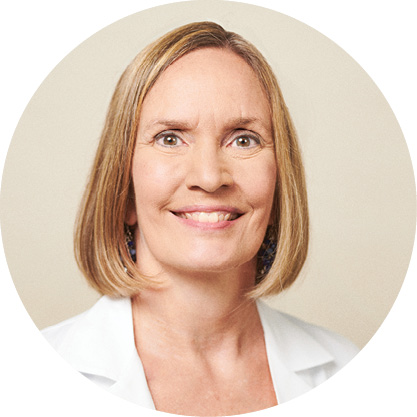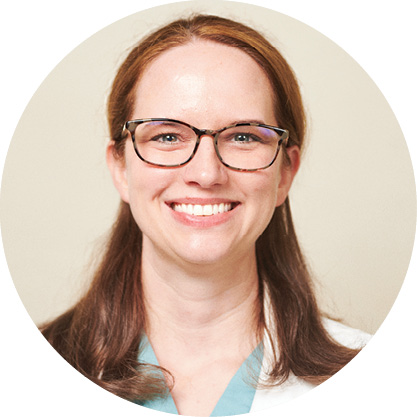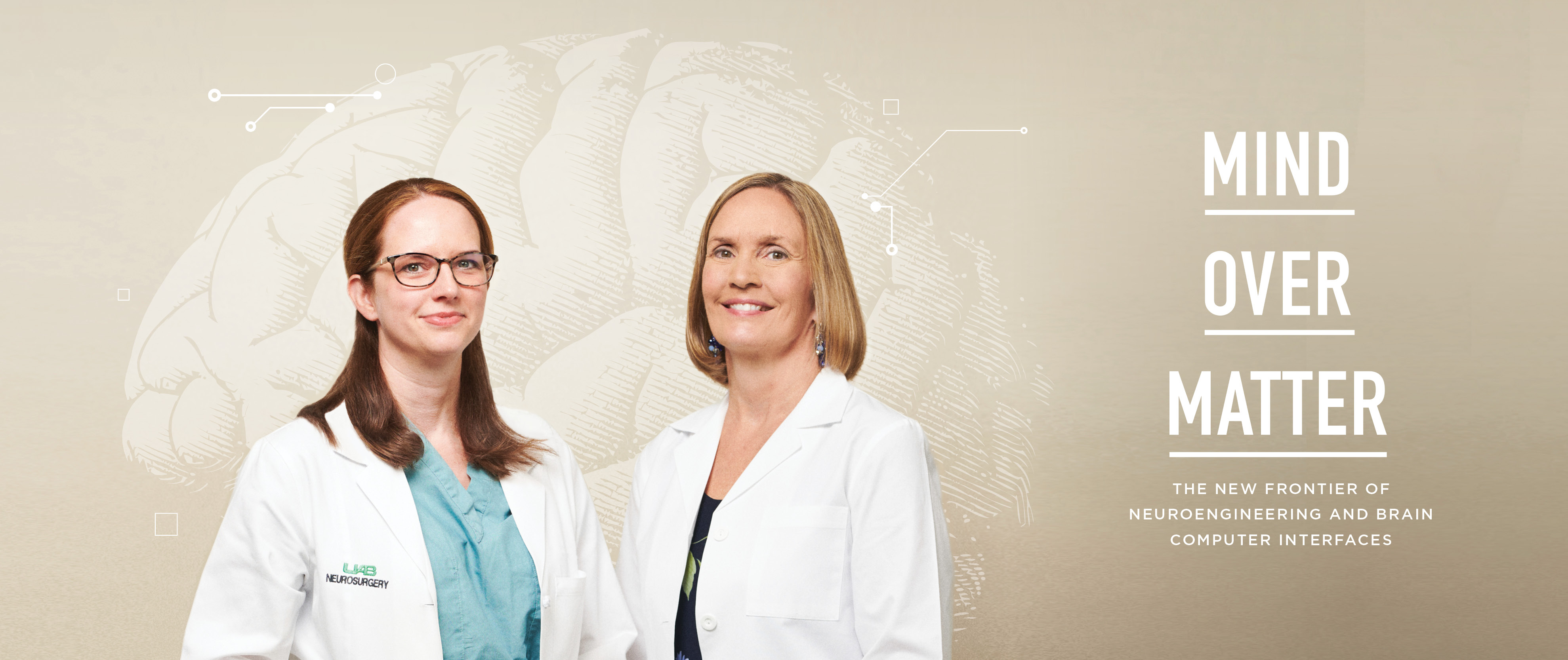Throughout medicine, what was relegated to science fiction inthe 20th century is fast becoming reality in the 21st century. Some of the most intriguing breakthroughs are occurring inthe burgeoning field of neuroengineering, which enables thehuman brain and nervous system to interface with computersand machines.
In other words, we now have the capability of communicating directly with the brain using implantable devices and bioelectronics, and of recording the nervous system’s signals. This is a conversation that ultimately could lead to therapies that help patients with cognitive or speech impairments, spinal cord or traumatic brain injuries, and neurodegenerative diseases such as Parkinson’s and Alzheimer’s.
UAB and the Heersink School of Medicine are fast emerging as leaders in this field. UAB launched a neuroengineering Ph.D. program in 2020, a first-of-its-kind program in the state of Alabama and one of the first freestanding neuroengineering doctoral programs in the country. In 2021, faculty from the UAB School of Engineering and the Departments of Neurobiology, Neurology, and Neurosurgery in the Heersink School of Medicine came together to establish the UAB Neuroengineering and Brain-Computer Interface Initiative (NBCII).
In October 2022, the NBCII transitioned into a new university-wide interdisciplinary research program called the Consortium for Neuroengineering and Brain-Computer Interfaces (CNBCI). Neurobiology Professor Lynn Dobrunz, Ph.D., who serves as director of the CNBCI, says the goals for the new center are to “foster collaborations, expand interdisciplinary research, facilitate large grant submissions, develop and commercialize neurotechnology, attract industry partners, provide state-of-the art training, and improve patient care.” The CNBCI leadership team includes Assistant Professor of Neurosurgery Nicole Bentley, M.D., as co-director, as well as Associate Professor of Radiology Mark Bolding, Ph.D., (associate director), and Professor of Biomedical Engineering William “Jamie” Tyler, Ph.D., (associate director).
 Nicole Bentley, M.D., and Lynn Dobrunz, Ph.D.
Nicole Bentley, M.D., and Lynn Dobrunz, Ph.D.
The CNBCI will host a national research symposium on neuroengineering and brain-computer interfaces, called NeuroGateways 2023, on March 30-31, 2023. The symposium will bring together leading experts from UAB and around the country to discuss the latest discoveries and clinical applications.
“This is a really exciting time in the field of neuroscience and engineering,” says Dobrunz. “Deep-brain stimulation is already being used to help treat Parkinson’s patients, and it has the potential to treat many other brain disorders as well. This research could be used to develop neuro-prosthetics that would help correct brain function or treat disorders like Alzheimer’s and epilepsy. There is some amazing potential in the work we’re doing.”
“The UAB Neuroengineering Ph.D. program is training students in the skills needed for this type of research and device development,” says Bolding. In a class taught by Bolding and Dobrunz last spring, a group of UAB neuroengineering students created a device that used signals recorded from a person’s neck muscles to instruct a machine to pick up a gummy bear and put it in the person’s mouth. Similar methods could be used to control devices using signals from the brain.
“The idea of being able to noninvasively manipulate things with your mind is the stuff of science fiction, but those are the kinds of things that are being worked on,” Dobrunz says. “In the future, you could have brain-computer interfaces that enable the brain to control and operate other devices. This could be used to control a prosthetic limb by using thought, which would be an amazing benefit for people with paralysis and other types of disorders that make movement difficult.”
In addition, researchers hope that by analyzing neuroengineering data, they can better understand what the brain is not doing correctly in patients with Alzheimer’s or cognitive impairments and use those findings to try to electronically rectify the problem.
“The hope is that, similar to how deep brain stimulation has transformed how we can help Parkinson’s patients with motor impairment, we can use neuroengineering to restore function in similar ways for many other diseases,” says Bentley. “We have a huge volume of data here at UAB, and we have excellent collaborations across campus. Now we are pushing to become a regional and national leader in this field of neural data science.”
Illuminating “The Black Box”
The brain has long been the black box of medicine. While researchers and physicians have an extensive understanding of how most of the body’s organs work, many of the brain’s functions have remained a frustrating mystery. But that is slowly changing.
“We understand better the language that the brain speaks, electrically and biochemically, and we’re starting to be able to interpret that language,” says Tyler. “On the therapeutic side, we’re learning how to speak back to the brain in a way that’s meaningful, and hopefully use that to mitigate some of the symptoms of these diseases.
“What we’re trying to do is take all these observations, these basic understandings of the way the brain works, and then use microprocessors to basically convert energy into some stimulus that the brain understands. That way, we can start to treat these diseases without using drugs. If you look at bioelectronic medicine, the goal is to use devices that stimulate nerve and brain function in the same way that a drug would. That’s the promise of the field.”
The CNBCI operates with more than 150 members across UAB, including a BCI subset group with more than 80 members. For one of their first initiatives, the BCI special-interest group is working toward establishing a data-sharing platform to provide group members with better access to data relevant to BCI.
During routine surgeries for movement disorders or epilepsy, neurosurgeons like Bentley implant electrodes into specific regions of the brain to deliver electrical pulses or to investigate seizures. These electrodes can also be used to record brain activity during the procedure that neuroengineers can later analyze. For example, neurosurgeons can record baseline brain activity while patients are resting, and then again while patients perform various cognitive tasks.
“The rich data contained in brain signal recordings can provide insight into how the brain processes information, and how abnormal processes can lead to diseases we see clinically,” Bentley says. “A major goal is to share this data across disciplines to answer fundamental questions about brain function in health and disease.”
 “The idea of being able to noninvasively manipulate things with your mind is the stuff of science fiction, but those are the kinds of things that are being worked on. In the future, you could have brain-computer interfaces that enable the brain to control and operate other devices.” – Lynn Dobrunz, Ph.D.
“The idea of being able to noninvasively manipulate things with your mind is the stuff of science fiction, but those are the kinds of things that are being worked on. In the future, you could have brain-computer interfaces that enable the brain to control and operate other devices.” – Lynn Dobrunz, Ph.D.
If those questions can be answered, Tyler says the potential benefits could be, well, mind-blowing. He notes that it already has been proven that pulse ultrasound can be used to control brain activity remotely. Researchers are now asking what else can the brain be directed to do, and how can that benefit patients?
“There is a lot of really good neuroscience at UAB, and a lot that could be unlocked to create new therapies and diagnostics,” Tyler says. “Those things need to be taken on a commercial path, which is what we’re doing.”
Researchers know that there remains a lot of investigation and testing to do before they are able to unlock many of the brain’s secrets. That is why the creation of the CNBCI is an important step for UAB’s efforts in the field.
“Now we have a lot more capability to bring awareness to the fact that there is so much data at UAB, especially in the field of neuroengineering and neuromodulation,” Bentley says. “This is what really sets UAB apart in these fields.”
With the new Ph.D. program, initiative, and consortium in place, the time is ripe to take that data and come up with answers for questions that have long confounded the medical world. “These are discoveries that could lead to potential treatments for so many disorders,” Dobrunz says. “That’s one of the things that makes the field of neuroscience and neuroengineering so fascinating right now. It’s really a very exciting time to be training students and post-docs in this area, and to be doing this type of work.”
Boosting AI in Medicine
While neuroengineering seeks to unlock the mysteries and challenges of the human brain, a different type of “brain” is the focus of efforts to use artificial intelligence (AI) to improve biomedical research, medicine, and human health. UAB is establishing itself as a leader in the field of AI in medicine thanks in part to the Marnix E. Heersink Institute for Biomedical Innovation. The institute was established in 2022 as part of the transformational $95 million gift from longtime UAB supporter Marnix E. Heersink, M.D., which named the UAB Marnix E. Heersink School of Medicine and also established the Mary Heersink Institute for Global Health.
The Marnix E. Heersink Institute for Biomedical Innovation is aimed at futurizing health care by leveraging artificial intelligence, digital technologies, data, and virtual reality to address challenges around cost, access, disparities, and quality in health care. The institute is led by Rubin Pillay, M.D., Ph.D., assistant dean for Global Health Innovation in the Heersink School of Medicine and chief innovation officer for UAB Health System.
“We have four signature clusters for the institute: artificial intelligence in medicine, digital health care, big data and analytics, and the Metaverse or meta health,” says Pillay. “All of our programming reflects those four signature areas, which, in my opinion, will shape the future of health care.”
In its first year, the institute named Andrew Smith, M.D., Ph.D., professor and vice chair of innovation in the Department of Radiology, its clinical director of AI, and developed a graduate certificate in Artificial Intelligence in Medicine, along with graduate certificates in Digital Health and Health Care Innovation. (The institute is also in the beginning stages of developing a graduate certificate in Brain-Computer Interfacing through a partnership with the UAB Neuroengineering Ph.D. Program, and is partnering with the CNBCI to deliver academic programming in brain-computer interfacing.)
The institute hosted its first AI in Medicine Symposium on September 29, 2022. Keynote speakers included Anthony Chang, M.D., chief intelligence and innovation officer at Children’s Health of Orange County and the author of “Intelligence-Based Medicine,” and Chris Aakre, M.D., vice chair for AI and Informatics of the Department of Medicine at the Mayo Clinic. The symposium also featured speakers from core global partners of the institute, including McMaster University in Canada, Alfaisal University in Saudi Arabia, and Maastricht University in the Netherlands.
AI in biomedical research got a boost in September 2022, when UAB announced that two UAB-led research teams out of approximately 100 contesting teams nationwide were selected for funding by the National Institutes of Health’s new Bridge2AI program. The program is bringing together researchers from diverse backgrounds and disciplines to generate ethically sourced tools, data sets, and resources that will ultimately help accelerate the widespread use of artificial intelligence by the biomedical and behavioral research communities.
The UAB Informatics Institute was awarded over $2 million over the next four years as part of the Bridge2AI program, while the UAB Department of Ophthalmology and Visual Sciences team received a one-year, $2 million grant.
 “The hope is that, similar to how deep brain stimulation has transformed how we can help Parkinson’s patients with motor impairment, we can use neuroengineering to restore function in similar ways for many other diseases.” – Nicole Bentley, M.D.
“The hope is that, similar to how deep brain stimulation has transformed how we can help Parkinson’s patients with motor impairment, we can use neuroengineering to restore function in similar ways for many other diseases.” – Nicole Bentley, M.D.
The UAB Informatics Institute team is led by module principal investigator Jake Chen, Ph.D., chief bioinformatics officer at the UAB Informatics Institute and a professor of Genetics, Computer Science, and Biomedical Engineering; co-principal investigator Ying Ding, Ph.D., of the University of Texas at Austin; operations manager Swathi Thaker, Ph.D., of UAB’s Center for Clinical and Translational Science (CCTS); and Pamela Payne-Foster, M.D., of the University of Alabama and CCTS.
“The functional genomic data set that we generate will enable biomedical data scientists to develop a multi-scale cell architectural view of stem cells and cancer cells, benefiting basic biomedical research, AI-driven drug discovery, and companion diagnostic discoveries,” Chen says.
The Department of Ophthalmology and Visual Sciences team is led by Cynthia Owsley, Ph.D., professor and director of the department’s Clinical Research Unit, Gerald McGwin Jr., Ph.D., professor in the UAB School of Public Health, and Jeffrey Edberg, Ph.D., professor in the UAB Department of Medicine.
“Our award is to lead three sites in the collection of data that will be used for machine learning approaches that will provide critical insights into the endemic condition Type 2 diabetes mellitus,” Owsley says.
According to Chen, “We view Bridge2AI as a major program paradigm shift by NIH to enlist biomedical data scientists to generate and standardize challenge problem-organized biomedical data at scale, making them ready for broader data science AI researchers outside of biology and medicine to develop new tools and impact future treatments.” – Cary Estes, Ryan McCain, Adam Pope, and Emma Shepard contributed to this article
